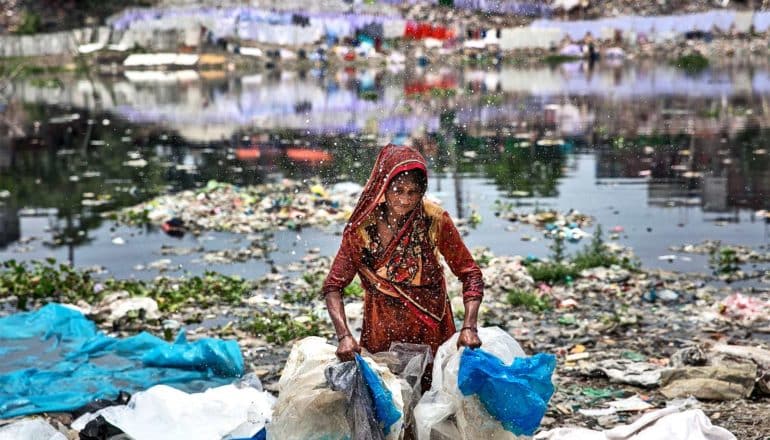
The waters of Bangladesh are home to a cocktail of pharmaceuticals and other compounds, including antibiotics, antifungals, drugs, pesticides, flame retardants, and more, a new study shows.
In spring of 2019, researchers set out to investigate what chemicals they could find in the waters of Bangladesh. They tested a lake, a canal, and a river in Dhaka, Bangladesh’s capital and the nation’s largest city. The team also sampled water from ditches, ponds, and drinking wells in a rural area known as Matlab.
The researchers didn’t find all of the chemicals at every location, and sometimes only detected low amounts. But the ubiquity of contamination is concerning, says lead scientist Diana Aga, professor of chemistry at the University at Buffalo.
“When we analyzed all these samples of water from Bangladesh, we found fungicides and a lot of antibiotics we weren’t looking for. This kind of pollution is a problem because it can contribute to the development of bacteria and fungi that are resistant to the medicines we have for treating human infection.”
The team found the antifungal agent carbendazim, flame retardants, and the insect repellent DEET at every sampling site.
The canal and river in Dhaka contained a medley of chemicals. Of note, scientists discovered multiple varieties of antibiotics at these two sites, along with antifungals. While researchers generally found fewer antimicrobials at the rural test locations, they found some antibiotics at certain sites, and antifungal agents were common.
“The fact that we found so many different types of chemicals is really concerning,” Aga says. “I recently saw a paper, a lab study, that showed exposure to antidepressants put pressure on bacteria in a way that caused them to become resistant to multiple antibiotics. So it’s possible that even chemicals that are not antibiotics could increase antibacterial resistance.”
First author Luisa F. Angeles, a PhD candidate in the chemistry department, traveled to Bangladesh to sample water and train scientists there on sample collection and preparation techniques.
Afterward, Aga, Angeles, and colleagues studied the water in their laboratory using state-of-the-art analytical methods.
In the past, technological limitations meant scientists could only test samples for specific targeted chemicals. Aga’s team was able to use a more advanced form of analysis that screens samples for a huge variety of pollutants—checking for more than 1,000 potential compounds in this case, including ones the researchers did not anticipate finding.
The discovery of antimicrobials in urban areas didn’t surprise researchers, Aga says, as these chemicals appear in human urine and later in wastewater released into rivers.
She thinks the presence of antibiotics and antifungals in water at rural sites may come from people using these chemicals to protect food crops and farm animals.
“It’s important to note that antimicrobial contamination of the environment is not unique to Bangladesh, but expected in many countries throughout the world where antimicrobial use is poorly regulated in both human medicine and agriculture, which is generally the case in lower-middle income countries of Asia,” says coauthor Shamim Islam, clinical associate professor of pediatrics.
“As undertaken in this study, we feel analyzing and characterizing such environmental antimicrobial contamination is a critically important component of global antimicrobial resistance surveillance and mitigation efforts.”
The paper appears in the journal Science of the Total Environment. Additional coauthors are from the University at Buffalo and icddr,b, a leading global health research institute in Bangladesh.
Source: University at Buffalo
The post Cocktail of chemicals hide in Bangladesh’s water appeared first on Futurity.
from Futurity https://ift.tt/3cEN3VY
No comments:
Post a Comment